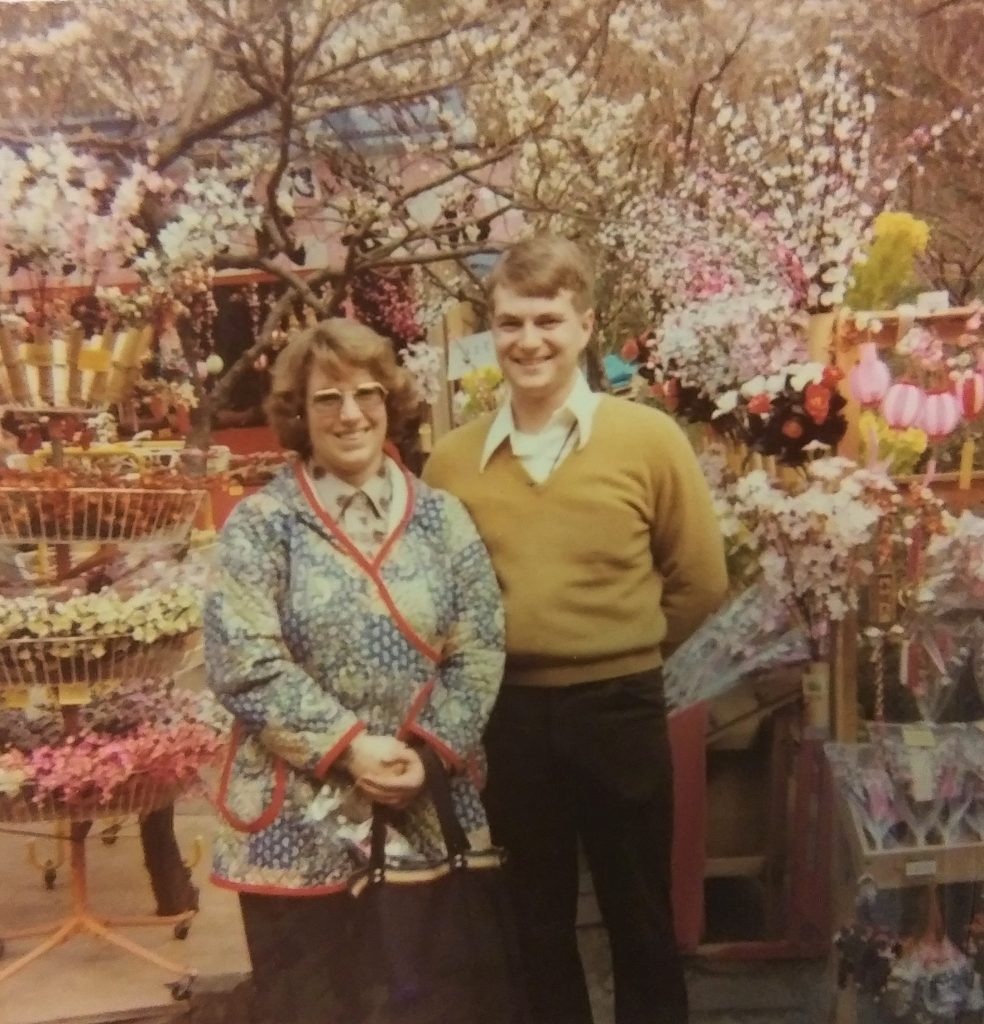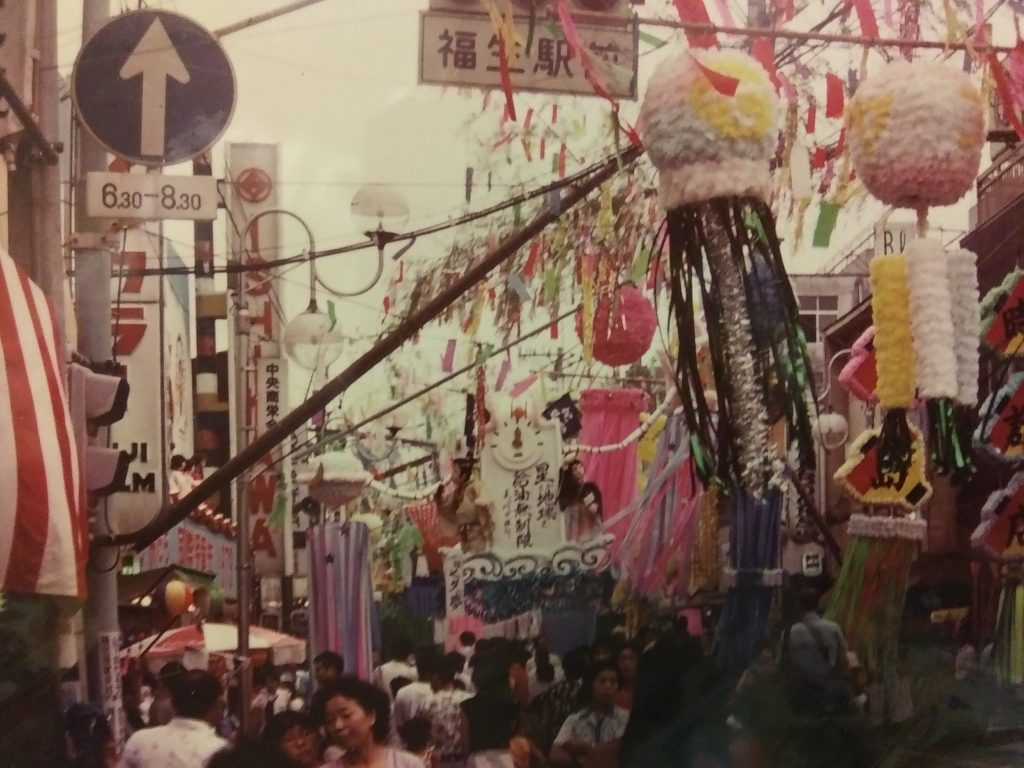
Author Jeff Roubal and his wife in February 1979 at Atami Plum Gardens south of Tokyo.
In the late-1970s, I was in the Air Force assigned as an ATOC duty officer at Yokota Air Base, Japan. ATOC was officially the “Air Terminal Operations Center” but everyone called it ATOC.
My job as a duty officer was to coordinate services for arriving and departing aircraft. ATOC was responsible for aircraft cleaning, passengers, air freight, mail, meals, water, latrines, and whatever else came up — everything but fuel, maintenance, and crew transportation. As a duty officer, I spent my 12-hour shifts driving up and down the flightline checking each aircraft every five or 10 minutes to identify and resolve problems before they caused a delay. The penultimate goal was on-time departures.
Yokota enjoyed a 98.6% aircraft on-time departure rate. This enviable statistic was briefed every day to important people all the way up the chain of command to a four-year general at Headquarters Military Airlift Command, fondly referred to as “Mother MAC.”
Yokota was busy in the 1970s. We handled the eighteen C-130 aircraft that were assigned permanently plus another dozen in-transit aircraft daily. Yokota was also a hub in the Far East Intratheater (FEIT) network with scheduled weekly passenger and cargo service to many destinations in the Pacific Theater including Taiwan, Korea, Okinawa, Hawaii and the Philippines.
I still remember a day in February 1979. The weather was cold with the threat of rain when we relieved the offgoing shift. One mission on the daily worksheet was flagged as “close watch.” Our 374th Wing Commander was scheduled to fly at 1000 hrs. Colonel Clark was a C-130 command pilot who flew once a month to maintain his pilot currency. Everyone would be keeping an eye on this mission. Woe be to the airman who screwed it up.
The folks in Maintenance Control assigned aircraft to individual missions. At 0200 hrs., they gave us a tail number for the commander’s mission. It was to be a weekly all-cargo FEIT mission to resupply Chitose and Kushiro, two tiny Pacific islands with Coast Guard navigation installations. Right after shift change at 0500 hrs, I personally inspected the six cargo pallets as they were loaded and tied down. Every “t” was crossed and every “i” dotted. The aircraft cleaners gave it a once over. The freight crews secured the load with brand new nets and tiedown straps. Nothing was dirty, leaky, or stinky. The aircraft was picture perfect.
At 0800 hrs., Maintenance Control called again. “We are swapping tail numbers,” they relayed without emotion. The aircraft we had carefully loaded was now broken. The maintenance crew chief had found something wrong during the preflight. The crew had already been alerted two hours before departure and were now enroute to have breakfast before they came to the aircraft. Maintenance had given up on trying to fix whatever was wrong and decided to change aircraft. This switch got them off the hot seat and dumped the blame squarely on ATOC if there were a delay.
Jumping into high gear, I diverted our air freight handlers from what they were doing to meet me on the C-30 parking ramp. They expeditiously downloaded 55,000 pounds of cargo from the broken aircraft and loaded it onto the new aircraft. The crew arrived right on time at 0900 hrs. We were done loading at 0910. I once again walked the load to find it picture perfect then parked my truck nearby to keep a watchful eye in case anything else happened.
I didn’t have to wait long. As I watched, the flight engineer pointed at something then called the maintenance crew chief. The crew chief called his boss who then called his boss. “This is not going well,” I thought to myself as four maintenance trucks lined up beside the aircraft.
Getting out, I chalked my truck tires and ambled over to join the gaggle. “What’s up?” I queried the flight engineer. “The APU doesn’t work,” he explained. I knew this would be a show-stopper. An Auxiliary Power Unit was used to provide electrical power and start the C-130 engines. At bases like Yokota, Maintenance provided auxiliary electrical power from portable aircraft generators that the crew chiefs towed around behind their pickup trucks.

Outside the maingate to Yokota AB in July 1979 with the Japanese town of Fussa decorated for Tanabata Festival
Unfortunately, on the small islands of Chitose and Kushiro, they didn’t have portable aircraft generators, or much of anything else. These were remote locations where a few Coast Guard staff were needed to maintain a LORAN transmitter. Any transiting aircraft would have to be totally self-sufficient, including auxiliary power.
Fortunately for ATOC, Maintenance did not have any more aircraft ready. If they had, there was no doubt in my mind that they would swap again, miss the scheduled departure time, and blame us because we could not possibly swap the cargo before 1000 hrs.
The Wing Commander was understandably disappointed. Maintenance folks, desperately grasping at straws, came up with a hair brained idea. “The APU can’t be fixed in time and we don’t have another serviceable aircraft so let’s bump some cargo and load a portable generator onboard,” they proposed. “When the aircraft gets to a remote island, the crew can offload the portable generator, start the aircraft, then reload the generator to return.”
This was a horrible idea on many levels. First, ATOC would need to offload and reload the cargo again. Second, we would need to bump three pallets of important freight going to a dozen guys isolated in the middle of nowhere with only one flight a week from the outside world. Third, we would need to prepare and certify a portable generator for air shipment, no easy task.
Finally, the crew would need to physically wrestle a 2,800-pound generator off and back on the aircraft at two remote locations without the mechanical equipment we normally used. I recalled the time we once shipped a pallet of bricks to Chitose because the Coast Guard was expanding their building. The aircrew told me that sailors formed a line to unload the bricks one-by-one because there was no equipment on the island to offload the whole pallet.
Despite my protests, it was decided to delay mission departure until noon and reconfigure the load to include one A/M32-60 portable power unit. The only bright side was that Maintenance had to accept blame for delaying the mission. The heat was off us.
ATOC people jumped through hoops to get it done. Fortunately, Maintenance had a “Dash-60” that was already prepped for air shipment. When the flight crew came back at noon, the freight handlers were just buttoning up for the third time. Unfortunately, this mission must have been jinxed.
The navigator found an avionics malfunction during their preflight inspection and the crew was quickly running out of duty day so the mission had to be scrubbed. It finally departed the next day, on the original aircraft, with the original cargo, and with a different crew. The Wing Commander flew another day when I was off duty.
Our Wing Commander was inconvenienced but nobody could not pin the rose on ATOC or on me. My boss even gave me an attaboy afterwards so I actually profited from the experience. Our freight loading crews, however, went home completely exhausted — just another day on the flightline.












